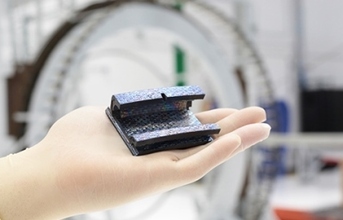
Rolls-Royce is introducing ceramic matrix composites in its future engine programmes
Ash Owen, Rolls-Royce, Chief Engineer, Civil Aerospace Demonstrator Programmes, said: "Testing so far has been completely seamless, which is an outstanding achievement when you realise that this is an engine incorporating a range of new technologies as well as a brand new core architecture. We have completed our first phase of testing and analysing the results right now. We like what we see from the CMC and ALM parts performance. "
CMC components are able to withstand higher operating temperatures, and require much less cooling air, while delivering a significant weight reduction, all contributing to improved efficiency.
ALM allows more complex engine elements with multiple pieces to be manufactured in fewer parts or even as a single complete part, improving lead times and allowing components to be redesigned quickly and easily during the development phase. Rolls-Royce has been at the forefront of innovation with this process, flying the world's largest 3-D printed aerospace structure within the Trent XWB-97 engine that was tested in 2015. ALM also increases production efficiency and reduces component weight while providing the ability to manufacture designs and shapes that would not be possible using conventional methods.
The Advance3 demonstrator is testing a new engine core that will deliver optimum fuel efficiency and low emissions. It is a key element in Rolls-Royce's future technology strategy to develop the Advance core for the UltraFan® engine design that will be available from 2025 and will offer a 25 per cent improvement in fuel efficiency compared with a first generation Trent engine.
END



























